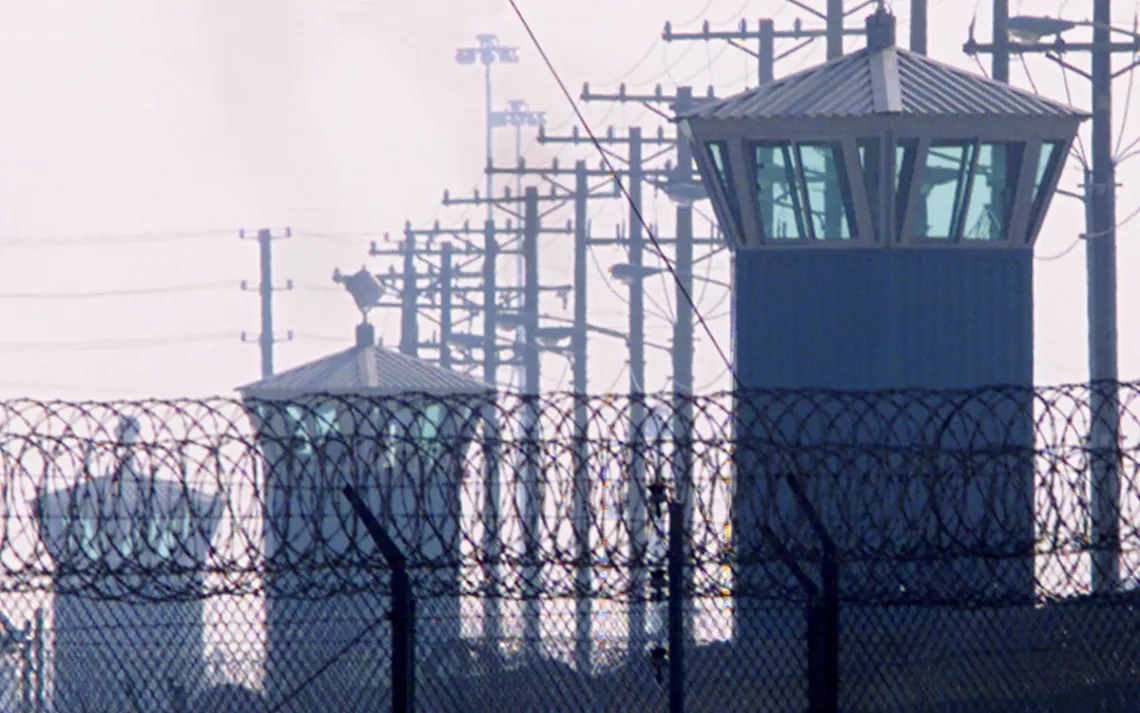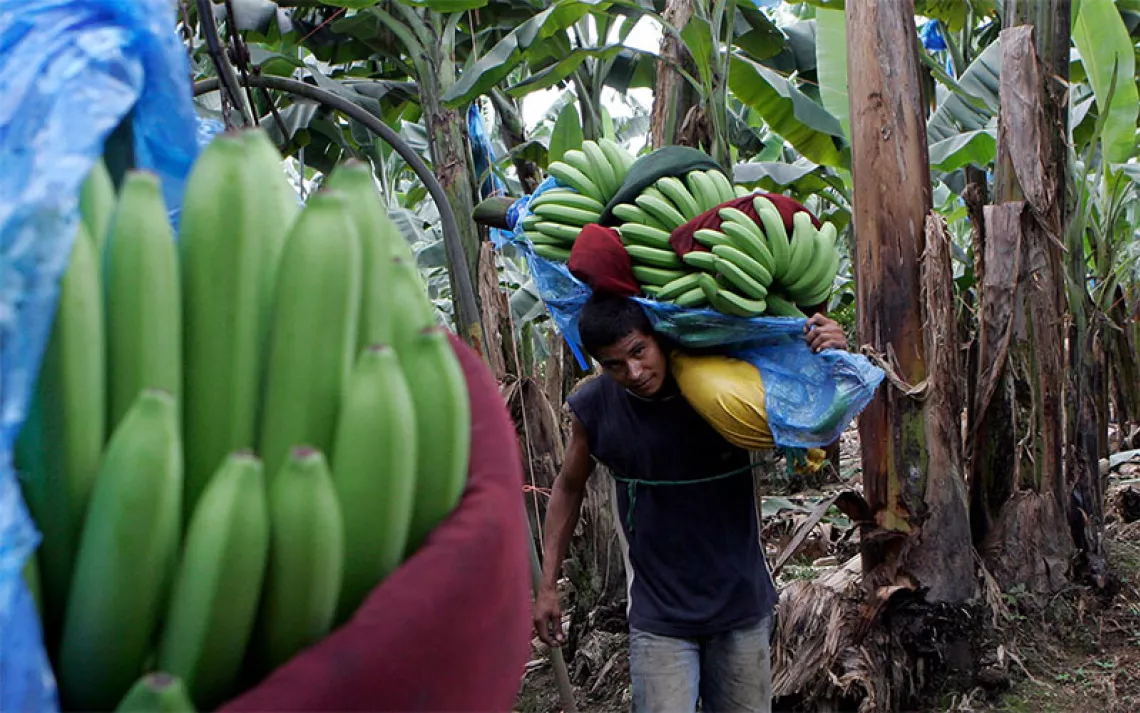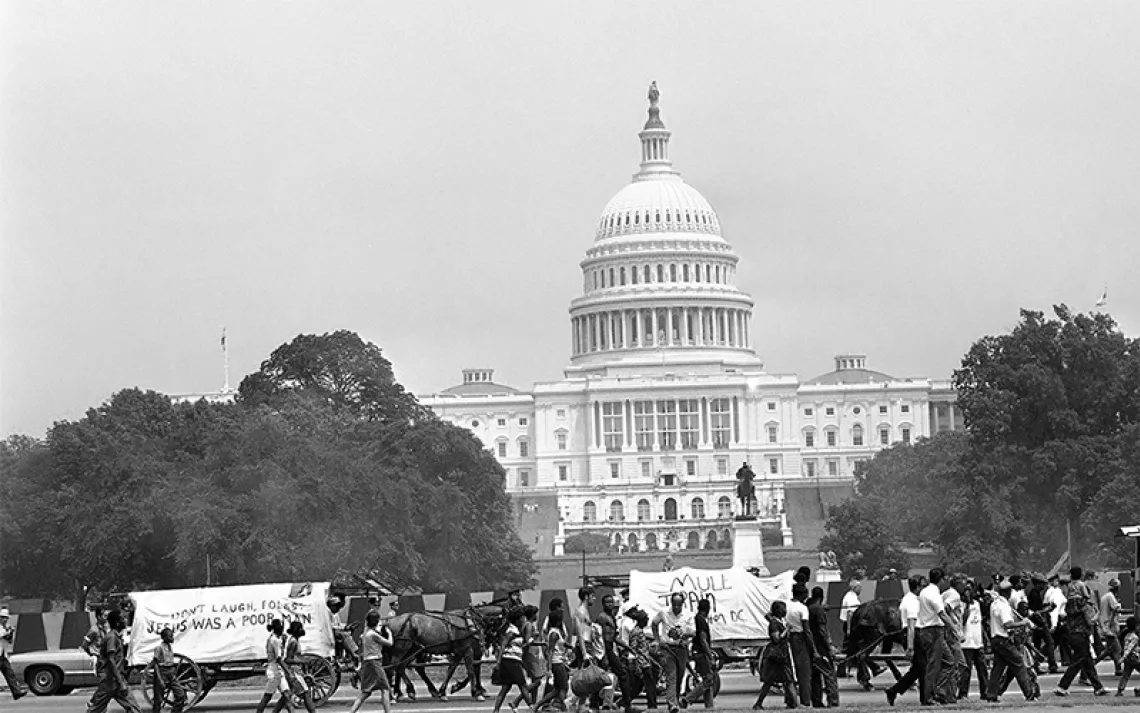Prisoners Are Uniquely Vulnerable to Extreme Heat and Flooding
Why were two prisons built in a lakebed in the first place?

Corcoran State Prison in Corcoran, California. | Photo by Eric Paul Zamora/The Fresno Bee via AP
Macio Lindsey, who is incarcerated at the Substance Abuse Treatment Facility (SATF) in Corcoran, California, was watching the news last March when he first heard about the flooding. He could only gather “bits and pieces” about what was happening, he says. One news segment mentioned “broken levees.” Another made it clear that the water surrounding the prison was steadily rising. When his wife and daughter tried to make their regular drive to Corcoran to visit him, they faced road closures and detours. “I was definitely concerned,” Lindsey says.
The California Department of Corrections and Rehabilitation (CDCR) made no attempt to calm inmates’ fears, Lindsey says. In the event of a natural disaster, incarcerated people like Lindsey have no control over when or how to respond. At the time of the flooding, Lindsey heard a rumor from another inmate that they might be evacuated and transferred to a vacated prison facility in the nearby town of Tracy, but he didn’t know what to believe. Lindsey worried that, during an evacuation, he and others might have to leave their personal possessions behind: photos of family members who have passed away, legal documents, and other items that are irreplaceable.
Inside the prisons and the nearby city, the flooding incited panic. But for the local Indigenous tribe, the Tachi Yokut, who live along the edge of the water, the flooding, which led to the reemergence of Tulare Lake, was something to celebrate—it marked the return of a long-lost ecosystem and way of life.
The Tulare Lake Basin had been mostly dry for the past 150 years, ever since white settlers diverted the rivers that naturally flowed into the lake. But last spring, after a particularly long and wet winter in the Sierra Nevada, snowmelt rushed toward the lake basin. For the first time in decades, the lake refilled. Water sloshed against the 14-mile dirt levee that surrounds the city of Corcoran and two state prisons, where Lindsey and 8,000 other incarcerated people are housed. Thousands of acres of farmland flooded, as the typically dusty, dry landscape transformed into a vast sea.
Though the state eventually agreed to pay the $17 million needed to raise the levee that protects the prisons and city, the flooding raised concerns about whether California prisons are adequately prepared for climate-induced flooding, as well as one much larger question: Why were two prisons built in a lakebed in the first place?
*
The history of the Tulare Lake basin, like in many parts of the American West, is marked by settlers’ attempts to control and manipulate nature, a legacy that has contributed to the environmental injustices of today.
Pre-colonization, Tulare Lake was the largest freshwater lake West of the Mississippi. It was vast, full of life, spanning over 500,000 acres, larger than the entire San Francisco Bay Area. The arrival of the first colonizers in the Central Valley marked the beginning of the region’s transformation into one of the nation’s largest agricultural hubs. Farmers began damming the rivers that used to flow into the lake and diverting them into canals. Then, they channeled the water to farmland for irrigation, explains Michael Semas, a Tulare Lake Basin historian. “And as more and more water got diverted, less water went into the lake to sustain its level, and it just evaporated and dried up,” Semas says. Native birds altered migration routes away from Tulare, and the once-abundant fish populations disappeared.
In 1853, the State of California declared the extermination of all Indigenous people, and 99 percent of the valley Yokuts population was killed. Among those who survived, most were displaced and moved onto the reservation that exists today. With the loss of the lake, however, also came the loss of their way of life, which had sustained them for thousands of years.
In the 1980s came “the prison boom,” which brought a new industry to the lake basin. Amid the war on drugs and the increase in the state’s tough-on-crime laws, demand for prison beds increased. Corcoran and SATF were two of the several thousand new prisons built across the US between 1970 and 2000. In search of work, Californians followed the newly constructed prisons to remote, rural areas, bringing not just incarcerated people to the at-risk environments but thousands of prison employees as well.
Today, the Tulare Basin is a sprawling patchwork of farms, stitched together by concrete canals that have transported water through the valley for decades. The lake’s return last year—which also occurred in 1969, 1983, and 1997—signals that despite the years spent controlling the region’s waterways, water may no longer be at people's mercy.
At the time of the Corcoran State Prison’s construction, “No other population area in California wanted prisons in their neighborhood. They came here by default because this was the only place that would welcome that type of economic activity,” Semas says. The reason the land in Corcoran was for sale was because its former owner, James Griffin Boswell, had deemed it too vulnerable to flooding for farming, Semas says—but, apparently, not for prisons.
Corcoran and SATF aren’t the only prisons struggling to keep incarcerated people safe amid a rapidly changing climate. Prisons across the state have been constructed in areas that are distinctly vulnerable to climate hazards, and flooding isn’t the only threat.
Incarcerated people are uniquely vulnerable to climate change “because they are entirely dependent on the state to help them respond to climate hazards,” explains Eric Henderson, coauthor of the Hidden Hazard report, which studied California prisons’ risk to wildfires, extreme heat, extreme cold, and flooding. Based on the authors’ research, “We did not feel that CDCR was adequately prepared to respond to climate hazards,” Henderson says. Despite repeated attempts, CDCR denied the researchers’ requests for a copy of their emergency preparedness plans, citing security concerns.
In the case of the Tulare Lake, Henderson points out that the flooding “wasn't just going to affect the prisons; it was going to affect the entire community.” There are only so many roads in the area, he says. If evacuation becomes necessary, prisons may need to rely on the local and state police force, as well as other county-wide resources. “What if they need to close some of the roads to evacuate people? What if some of the roads were flooded and they could not evacuate people? How is the community going to respond? And how is the community going to be affected?”
*
Last spring, the members of the Tachi Yokut tribe gathered along the shore of the lake. There, they prayed, sang songs, gave offerings, and blessed the land, says Kenny Barrios, who lives on the Santa Rosa Rancheria, an Indigenous reservation 30 minutes from the prisons. It was a joyous moment for the tribe—but an ephemeral one too. The lake vanished almost as quickly as it refilled. Neither Corcoran nor SATF flooded. As of May of this year, the lake basin is empty again. But the possibility of its return still looms.
Prison abolitionists and Indigenous rights activists alike believe the way of life people in the Central Valley have grown accustomed to, dependent on agriculture and incarceration for its economy, is no longer sustainable amid a changing climate. “We got pretty lucky,” says Daniel Swain, a climate scientist at UCLA. The flooding could have been much more damaging for the prisons and surrounding communities, he explained. “The enormous volume of water just threaded the needle and melted just fast enough to avoid the summer heat waves but just slow enough not to overwhelm the system in the spring.”
Swain projects that California will see winters even wetter than the one that led to the refilling of Tulare Lake last spring. “This will not be the last time Tulare Lake reappears in a warming climate.”
Several options exist for dealing with climate hazards in California prisons, explains Abby Cunniff, a PhD candidate at the University of California, Santa Cruz, who studies environmental injustice and California prisons. One is to make prisons more durable to climate effects. Raising the levee that surrounds Corcoran and SATF is an example of that sort of solution. Then, there are de-carceral solutions that attempt “to downsize the whole prison industry in California and [minimize] the amount of time people spend in captivity, which then makes them more vulnerable to climate risks,” they say. On the furthest end of the spectrum, “there are demands for full prison abolition as immediately as possible because that's the way that people will be most empowered to protect their health in the face of climate change.”
While there have been attempts to reform prisons to be more resilient to climate hazards, “I don't think we've seen any successes in that regard. I think we've just seen failure after failure,” Cunniff says. The only route forward for at-risk prisons, they believe, “is to push for prison closures as soon as possible.” The authors of the report on climate hazards in prisons called for at least a 50 percent cut in the state’s prison population. “If there are fewer people in the prisons, there are fewer people to evacuate,” Henderson says. Statewide, California has committed to reducing the number of people incarcerated; since 2018, the state has seen a 25 percent decrease in prison populations and the closure of two state prisons, with a third set to close in 2025.
For cities like Corcoran, where the California State Prison system is the city’s largest employer, talks of prison closure threaten thousands of people’s jobs. Margaret Lirones, a librarian at Corcoran State Prison, worries that prison closure would also cause her home’s value to plummet. “My home is my investment and my retirement plans depend on my being able to sell that home,” she says.
Californians United for a Responsible Budget (CURB), a Black-led statewide coalition of more than 80 grassroots organizations, published a road map to prison closure, outlining a just transition from incarceration. CURB calls for creating new, green jobs for the tens of thousands of people currently employed by the state’s prisons and supporting initiatives that help transform prison-dependent economies. Cunniff believes that losing prison jobs does not have to mean more unemployment. Rather, these jobs could be redirected to meet the state’s changing environmental and social landscape.
For Lindsey and the many others still incarcerated in the lakebed, they face an uncertain future. “It’s still a concern,” Lindsey says. He believes that last year’s flooding “should have been a lesson that we really need things in place: evacuation plans—not just that [CDCR] knows about—but that we know about.”
For Barrios and the Tachi Yokut tribe, the continued operation of the prisons in the lakebed also doesn’t fit into their vision for a more just future. “I don't think anything should have ever been built in the bottom of the lakebed. That is just a disaster waiting to happen,” Barrios says. Raising the levee is “putting a Band-Aid” on the problem, he says. “If it ever comes down to the water really, really coming back, levees are not going to stop it.”
In the Central Valley, a region which has cycled between extreme flooding and severe drought for generations, Barrios is “hoping for the return of the lake.”
Barrios envisions a new life for the Central Valley, one that is centered around the lake's existence, rather than its disappearance. He believes that the lake could attract tourism and can imagine “people stopping to see it on their way to Yosemite,” which could support the natural environment while also creating new jobs. Designating the lake as a national park would be a dream come true, he says—“something that’s gonna live forever.”
“I would love people to be able to gather there, to have ceremonies, and to continue the things that our ancestors wanted,” Barrios says.
 The Magazine of The Sierra Club
The Magazine of The Sierra Club



